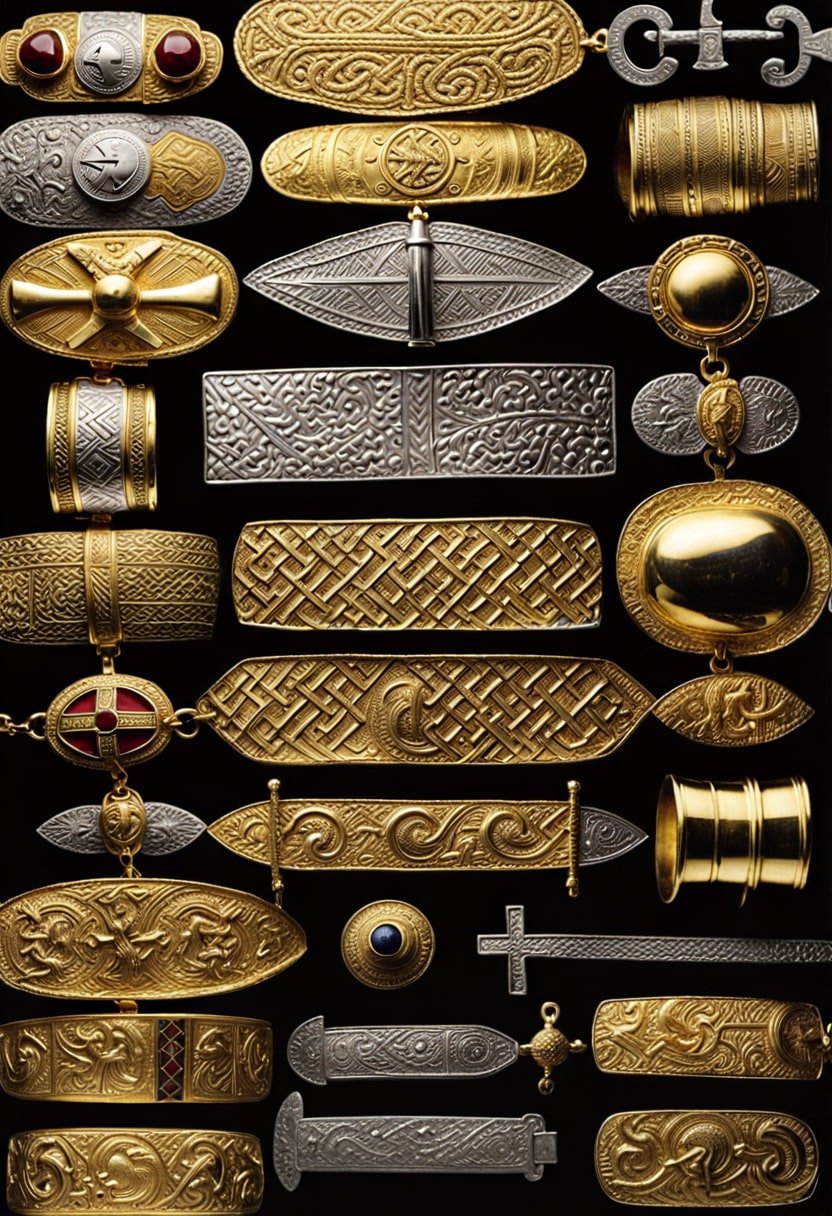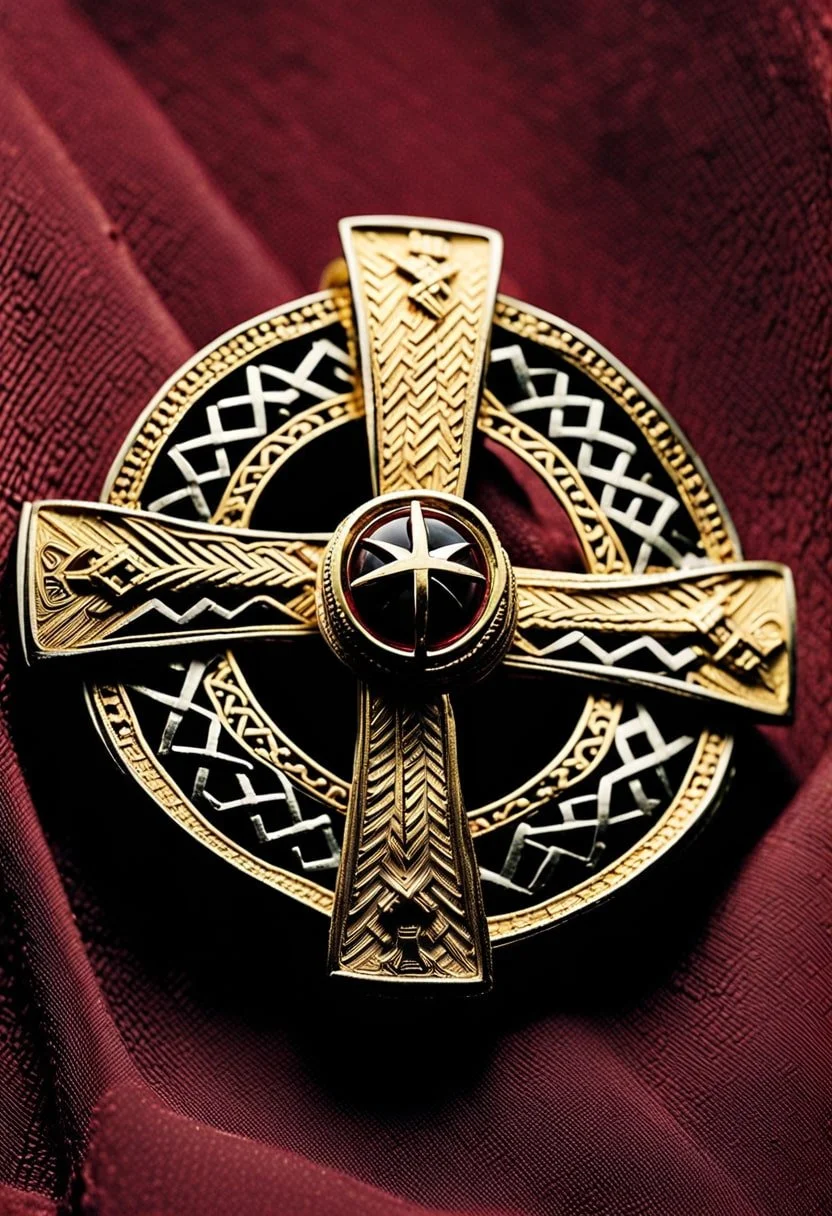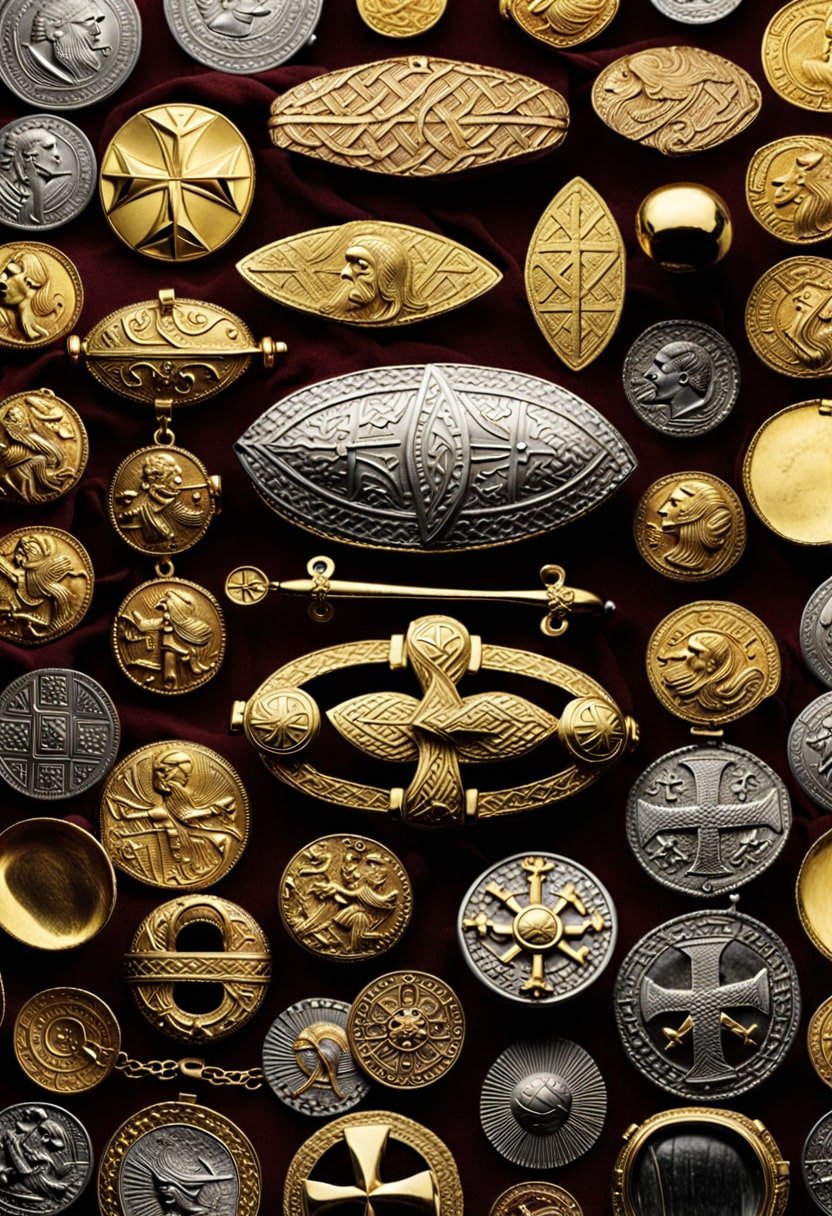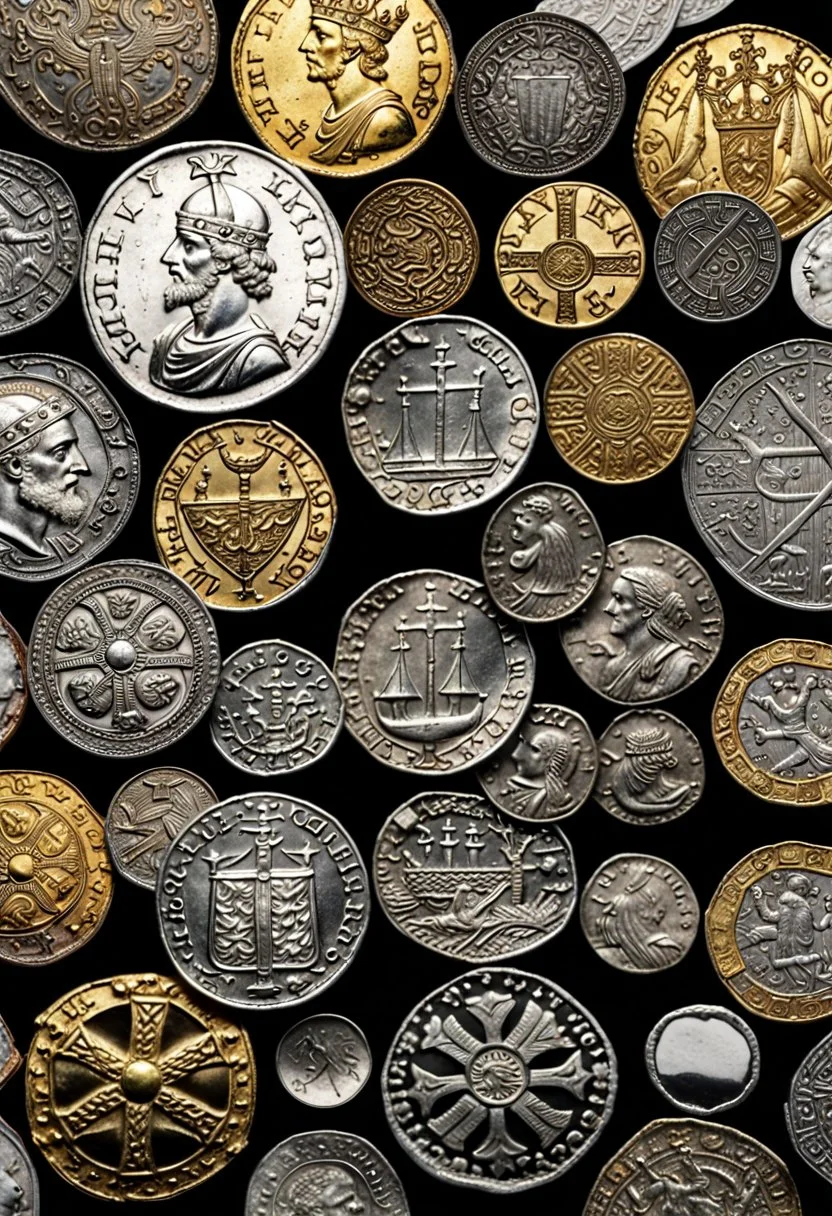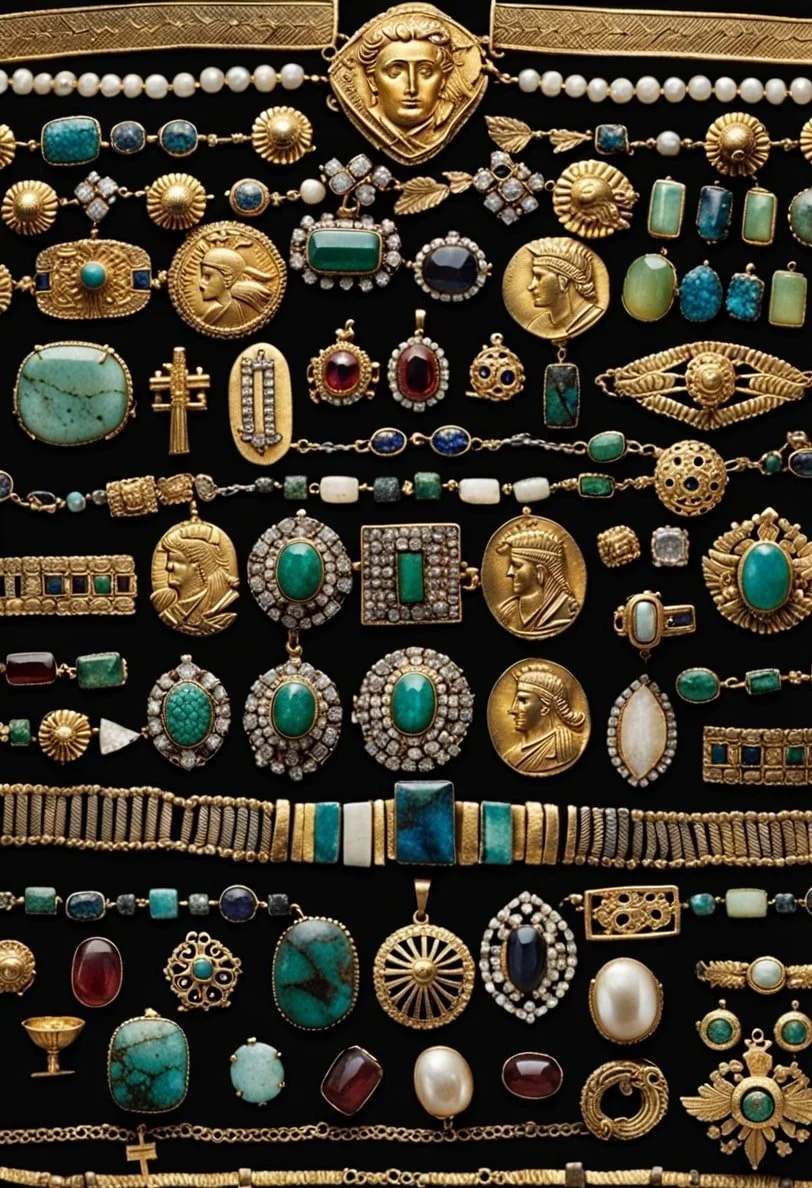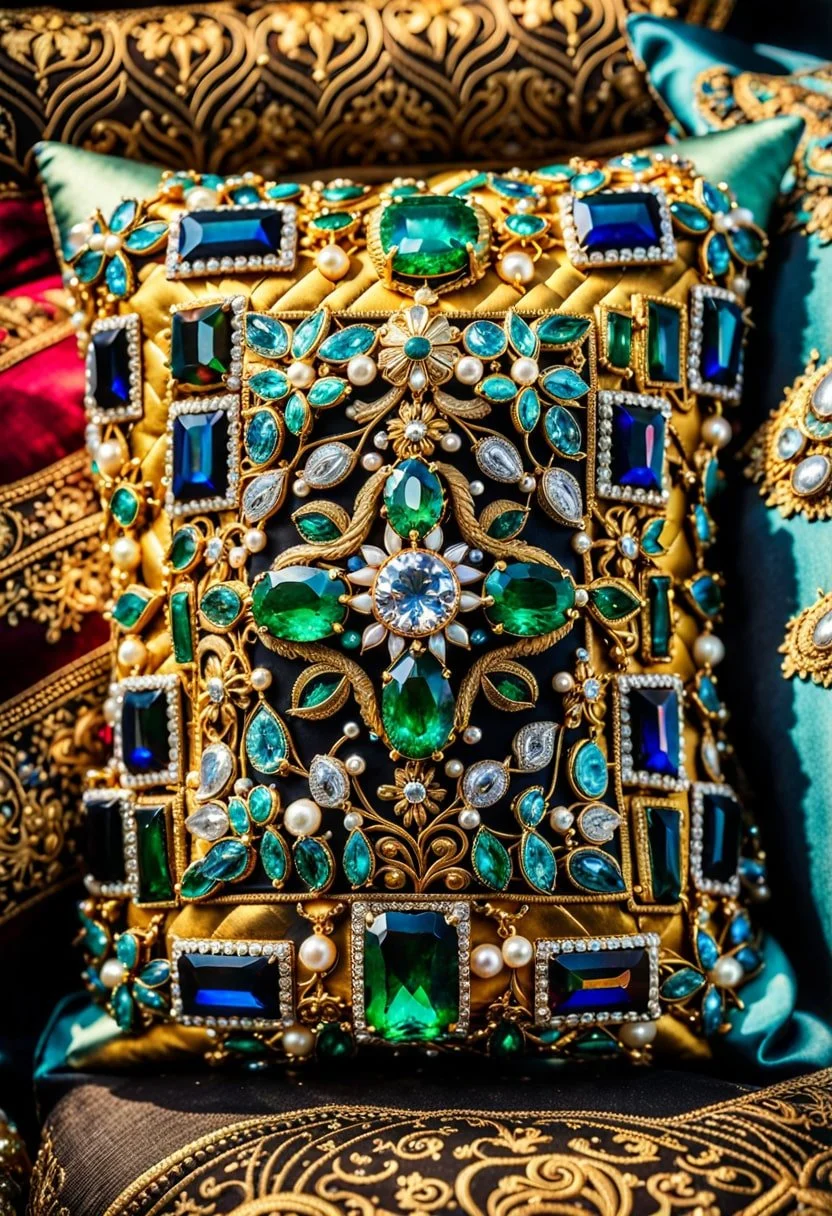Unearthing History: Ancient Civilizations' Greatest Hidden Hoards
Across the globe, intrepid explorers have unearthed troves from past civilizations brimming with precious metals, dazzling jewelry, and priceless artifacts.
These extraordinary discoveries provide a tantalizing glimpse directly into ancient customs, remarkable artistry, and the stratospheric rise and catastrophic fall of mighty empires. This epic narrative delves into some of the most legendary treasure hauls ever found, from before the turn of the 20th century.
The Gilded Power of Precious Metals
The Staffordshire Hoard - Anglo-Saxon England's Sparkling War Cache
In the year 2009 CE in the English West Midlands, a dazzling cache beyond any fortune hunter's dreams was pulled from the earth - the Staffordshire Hoard.
Containing over 3,500 pieces of intricately worked Anglo-Saxon gold, silver, and blood-red garnet, this buried trove comprises the largest hoard of Anglo-Saxon gold ever found, shedding light on a turbulent period of Early Medieval England (Staffordshire Hoard, n.d.).
The Origins of the Gem-Encrusted Horde
This profession-perplexing treasure dates back to the 7th to 8th centuries CE, when England found itself fragmented into small kingdoms constantly at war.
Incessant battles and campaigns disrupted society as Anglo-Saxon warlords fought for supremacy.
The Staffordshire Hoard represents the accumulated battle wealth of Mercia, one such ambitious war kingdom.
As far back as the 6th century, the ruthless Mercians had conquered surrounding territories under great war kings like Penda and Offa.
But by the 9th century, new threats emerged as Norse raiders harried England's coasts.
Eventually, the Mercians faced defeat by Wessex kings like Alfred the Great.
In the chaos of war, the losing Mercians buried their martial riches to keep them from conquering hands.
For over a millennium, the glittering weapons and fittings were lost.
But in 2009, Terry Herbert, a humble metal detectorist, unearthed the ultimate buried treasure.
And Anglo-Saxon England's long hidden gold finally saw the light of day once more.
A King's Ransom in Precious Adornments
What Herbert uncovered that fateful day confounded experts - a vast array of intricate objects heaped together with no bones.
Clearly, this was a purposeful cache meant to keep the precious items safe, not a grave.
The memorable mass of precious artifacts includes elaborately worked sword fittings and hilt collars, many inlaid with blood-red garnets.
Intricate filigree crosses likely adorned relic boxes or manuscripts. Striking helmet crests showcase animal motifs from Anglo-Saxon myth.
Beyond the expected weapons, the hoard also held surprising Christian items like processional crosses, showing a blend of old pagan ways with England's new official faith.
In total, the collection tops five kilograms in weight.
The British Museum declared it has "outstanding aesthetic quality" compared even to famous Anglo-Saxon treasures like the ship burial at Sutton Hoo (British Museum, n.d.).
Such a sweeping array of top-tier metalwork in pristine condition astounded historians.
The hoard demonstrates the heights of artistry Anglo-Saxon metal smiths achieved and the vast wealth elite nobles accumulated.
In uncertain times, gold bestowed authority.
Buried away, these treasures embodied the lasting legacy of Mercian power for future generations.
But with Mercians defeated, the hoard never returned to its owners.
The glittering objects became eternal reminders of Mercia's martial past and England's neverending dynastic turmoil.
Their radiance saved for posterity, the treasures now illuminate a vanished culture.
The Oxus Treasure - Persia's Gilded Peak
In 1877, along the banks of the Oxus River in modern-day Tajikistan, another princely cache surfaced from antiquity - the Oxus Treasure (Curtis, 2005).
Containing over 170 exquisite gold and silver objects, this extraordinary hoard encapsulates the immense wealth and refined aesthetic tastes of the mighty Achaemenid Empire at its cultural apex.
Persia's Gilded Glory
This treasure originated in the sprawling Persian Empire ruled by the Achaemenid dynasty, which dominated the Near East from 550 to 330 BCE at its height under great kings like Cyrus, Darius, and Xerxes.
With imperial holdings stretching from Egypt to India, the formidable Persians accumulated massive wealth.
As the hub of empire, the royal capital Persepolis became home to sumptuous palaces decorated with precious metals, showcasing the kings' power.
The Oxus Treasure's incomparable metal furnishings and jewelry would have dazzled visitors to the royal court.
But around 330 BCE, Alexander the Great dealt the crushing blow, conquering Persia and looting its capitals.
As their mighty empire collapsed, Persian nobles hid their treasures. The Oxus cache was likely buried by a fleeing courtier as Alexander's army drew near.
Forgotten for centuries, it became a time capsule of Persian splendor.
Pinnacle of Achaemenid Metalcraft
The Oxus Treasure's contents showcase the extraordinary artistry and ostentation of the ancient superpower at its height.
The collection's over 170 objects display a remarkable range of decorative techniques executed with supreme mastery of precious metals.
Ornate rhytons for drinking, carved statuettes, and intricately embellished cups and jars depict Persian themes like real and mythical animals.
A solid gold Achaemenid coin from c. 380 BCE stands testament to the empire's vast wealth. The showstopping centerpiece is a tiny gold chariot group sculpted in astounding detail.
But the long burial took its toll - exposure and shifting sediments left many items fragile.
Still, this metalwork represents Persian artisanship at its zenith.
The priceless cache provides a direct glimpse into ancient Persia's prosperous, cosmopolitan society and the artistic influences its empire absorbed from Egypt to India.
Hidden for safekeeping as war loomed, the Oxus Treasure became a time capsule of Persia's glory days long after its imperial star faded.
But its gilded craftwork remains eternal testimony to the Achaemenid dynasty's formidable power.
Dazzling Adornments and Ritual Offerings
The Vale of York Hoard - The Viking's Silver Collection
In 2007, amateur detectorist David Whelan uncovered a true jackpot near the town of Harrogate in England - the exquisite Vale of York Hoard (Ager & Williams, 2009). Dating to the late 9th-10th centuries CE, this astonishing Viking Age collection contains over 600 silver coins and 65 ornate silver objects from across the Viking world. This magnificent buried wealth provides invaluable insights into medieval Scandinavian society.
The Viking's Worldly Riches
This prodigious hoard stems from the Viking Age, when Norse raiders and traders sailed far beyond Scandinavia on epic voyages as far as Russia and Baghdad. Returning laden with plunder and exotic goods, they amassed huge wealth.
Elite Vikings likely buried such impressive silver as savings or ritual deposits. The Christian-pagan mix of items in the hoard suggests a wealthy traveler acquired the cache across wide-ranging voyages through Christian and Islamic lands.
In unstable Viking times, burying one's wealth kept it safe. But forgotten hoards became troves for future generations. The Vale of York's lucky finder gained an incalculable windfall.
Glittering Silver of Norse Nobles
The hoard contains stunning objects likely owned by Viking aristocracy. Intricate jewelry includes bracelets, rings, and brooches decorated in Scandinavia's famed art styles. Curious Christian artifacts like crosses reference the new religion spreading in medieval Europe.
Most intriguing are over 600 silver Islamic and European coins from as far as Afghanistan. This diversity attests to the Vikings' remarkable trade reach and the branching complexity of medieval economies.
Well-preserved by long burial in England's soil, the eclectic collection provides a sweeping panorama of a interconnected medieval world economy. The silver objects and coins remained untouched for centuries as kingdoms rose and fell until modern technology recovered Viking wealth. The hoard remains an unparalleled time capsule granting a vivid glimpse into Norse society's cosmopolitan connectedness.
The Snettisham Great Torc - A Celtic Masterpiece
Among ancient Celtic metalwork, few rival the grandeur of the Snettisham Great Torc, a massive eight-kilogram gold neck ring discovered in England in 1950 (Stead, 2006). At over 28 centimeters wide, this metalworking tour de force likely adorned only the most elite nobles in Britain's late Iron Age Celtic tribes.
The Celts' Boundless Riches
This legendary torc emerged around 75-50 BCE from the opulent art style of the British Celts just before Roman conquest. Ruled by warrior aristocrats, Late Iron Age Celtic society prized ostentatious shows of wealth and status.
Their appetite for gold spawned metal creations like the Great Torc, surely worn only by kings. Its scale and intricacy reflect the extraordinary riches Celt chiefs accumulated from dominating trade and war. Like much Celtic gold, the torc was an offering deposited purposefully, not lost.
Buried for ritual reasons on the borderlands of tribal territories, the torc remained undisturbed for over 2000 years until modern rediscovery. Such offerings were meant to project eternal power and prestige to gods and future generations. Meant not for any mortal neck, the epic torc became an enduring statement of Celtic nobles' authority.
The Ultimate Statement in Celtic Style
Even today, the Snettisham Great Torc stands among the most spectacular examples of ancient Celtic gold ever found. Its exceptional diameter and eight-kilogram heft immediately convey its significance. Crafted in high purity gold, its bold ribbon geometry epitomizes the distinct Celtic art style.
Found alongside smaller torcs and bracelets, the great torc was clearly the showpiece that would visually dominate any ritual gathering. Though belonging to nobles, such gilded creations served larger spiritual purposes in projecting eternal Celtic power.
Thus this Snettisham masterpiece symbolizes the Celtic metal smith's genius and the central importance of displays of wealth in Iron Age Britain on the cusp of revolutionary Roman conquest. Forgotten for ages, the massive torc remains eternal testimony to the unimaginable riches Celtic warlords amassed. Its towering presence awes to this day like it must have millennia ago.
Stunning Feasting Sets for the Elite
The Ladbrog Hoard - Pagan Offerings of the Northmen
In 1734 near the Danish city of Horsens, the ornate Ladbrog Hoard surfaced (Michaelson, 2019). Containing gilt silver gilded vessels, it represented lavish religious offerings from around 600 CE during Scandinavia's Vendel Period as Norse culture transitioned into the Viking Age. Forgotten for centuries, this rare sacrificial treasure survives as a relic of ancient pagan rites.
Gifts for the Gods
The Ladbrog Hoard was a ritual cache of votives given to gods or noble dead. In pagan times, Nordic chieftains placated gods by sacrificing precious items and animals. Such offerings proved devotion and bought divine favor.
Likewise, burying treasured goods in tombs ensured the dead were equipped for the afterlife. Wealth followed its owner into the hereafter. But forgotten graves leave their riches behind.
Thus did the Ladbrog offerings remain buried for centuries until chance brought them back to light. Never meant for human eyes again, the gilt vessels became an unexpected time capsule of now-vanished rites.
Relics of a Cosmopolitan North
The Ladbrog Hoard's three gilt vessels showcase the exquisite artwork of ancient Germanic metalworkers. The brilliant "Ladbrog goblet" depicts Norse mythic scenes in ornate silver repoussage. Two grand handled cups feature aquatic wildlife and intricate braided knot designs.
Gilt silver elevated the cache's value, as did meticulous decorative elements marrying Germanic, Celtic, and Greco-Roman influences in swirling animal interlace patterns. An ornate fusion of diverse traditions reflects Northern Europe's cultural complexity centuries before the Vikings.
Found carefully arranged by a female skeleton, the hoard likely represented funeral tributes to the dead, or solemn offerings invoking gods' protection. Their remarkable preservation grants us the privilege of glimpsing Nordic beliefs on the cusp of transition.
The Berthouville Treasure - Extravagance of the Gallo-Romans
In 1830, a momentous find emerged at the ancient town of Berthouville in northern France - a spectacular Roman silver dining set (Meyerson, 1991). Made in the 1st century CE for a wealthy Gallic family after Rome's conquest, this intact household treasure illuminates the lavish lifestyles of Gallo-Roman aristocrats at the edges of empire.
The Opulent World of Gallo-Rome
This treasure came from Julio-Claudian Gaul, as Rome expanded beyond Italy, spreading Roman culture worldwide. In conquered provinces like Gaul, local notables embraced a Romanized lifestyle to elevate their status.
Elite Gallo-Romans eagerly adopted Roman customs like extravagant banqueting to display their cosmopolitan refinement. Their hunger for flashy luxury goods drove artisans to new heights, blending classic Roman style with native Gallic motifs.
Such provincial treasures eventually found their way into temples as gifts garnering divine favor. But temples left abandoned and looted surrendered their riches back to time. Over 15 centuries later, the ground yielded back marvelous Gallo-Roman silver to astonish modern eyes.
A Cosmopolitan Household's Collection
The Berthouville fittings comprise over 20 platters, cups, jugs, and more - a complete ancient tableware set for grand feasting. Gorgeous mythological figures in Roman style adorn reliefs beside abstract Celtic patterns, beautifully blending traditions.
Marks of the original Gallic owners remain. Inscribed names indicate the local aristocratic donors behind such donations to the town temple. Their legacy lasted millennia longer than their mortal lives.
Thus this intact 1st century CE dinner ensemble provides an extraordinary window into provincial Roman dining and the cosmopolitan lives of elite Gallo-Roman families hungry to enjoy the same luxuries as imperial citizens in Rome itself. Its preservation allows us the privilege of glimpsing the glittering reflections of an ancient multicultural world.
Opulent Heirlooms of Ancient Anatolia
Priam's Treasure - The Jewels of Legendary Troy
In the 1870s, the long-lost ruins of Troy in Turkey surrendered an unimaginable find from the pages of legend - the spectacular Priam's Treasure (Easton, 2002). Likely representing the royal jewelry collection of Priam, the mythic king of Troy from Homer's epics, this dazzling haul dates back an astonishing 3500 years to the Bronze Age city's golden era.
A Legendary King's Fortune
This epic treasure dates from 2500 - 2400 BCE, during Troy's ascendancy as a major mercantile hub of the bustling ancient Near East. Strategically situated, Troy amassed huge wealth from Black Sea trade networks years before Homer immortalized it.
Though associated with the mythical king Priam, the cache predates Homer's Trojan War by a millennium. But its royal scale certainly matches the legendary riches described lavishing Troy's citadel in the Iliad. Lost for centuries, the long-buried jewels found vindication as relics of an era before myth melded with history.
For unknown reasons, perhaps invasion, this princely collection was tucked away never to grace royal brows again. But the rich hoard lay waiting patiently to prove Troy's past splendor was more than poetic myth.
Jewelry Fit for an Epic's Pages
Truly astounding in both magnificence and scale, the hoard contains over 9,000 precious objects. Its diadems, pectorals, pins, and more boast exquisite granulation and filigree. Gleaming gold abounds, with silver, copper, and bronze accents.
Four gold and silver amphoras contained over a kilogram of gold alone in royal heirlooms. The anachronistic level of wealth and refinement in this Bronze Age jewelry collection dazzled historians. The tangible riches of mythic Troy surpassed wildest dreams.
Thus Priam's Treasure stands as sensational testimony of an intricate metalworking tradition flourishing millennia before Homer's era. Though the kingdom vanished, the splendor of its royal cache endures, echoing legends of Troy's wealth for eons to come.
The Panagyurishte Treasure - Thrace's Golden Artistry
In 1949, Bulgarian farmers unearthed an even more ancient trove - the Panagyurishte Treasure (Kitov, 2008). 6,164 lavish Thracian gold and silver objects dated to the 4th-3rd centuries BCE. This peak of ancient Thracian artistry revealed Classical influences on the Thracian nobility from the neighboring Greek world.
Thrace's Cosmopolitan Golden Age
This legendary cache dates to Thrace's cultural golden age under the prosperous Odrysian Kingdom. With strategic access to Aegean trade, the Thracian interior boomed. Greece's artistry blended with Thracian motifs, birthing unique styles.
Demand for finely wrought treasures like Panagyurishte soared among Odrysian aristocrats eager to emulate Greek sophistication. Metalworking centers perfected techniques over centuries to satisfy their appetites. Eventually such treasures found ritual purpose in offerings to gods and elite burials to project eternal power.
Forgotten for eons underground, the sensational Panagyurishte set resurfaced to showcase ancient Thrace's flourishing cosmopolitanism and the extraordinary metalworking talents it inspired.
A Legacy in Metal of Greece and Thrace
Simply unprecedented in scope and preservation, the Panagyurishte objects highlight Thrace's reputation for exquisite metal arts. The collection constitutes ceremonial wine vessels like amphoras, jugs, drinking horns, and libation bowls for feasting.
Lavish gilded scenes depict figures from Classical mythology and philosophy like Orpheus, Hercules, and the Thracian rider. Imagery blends Hellenic motifs with Thracian elements like floral scrolls and zoomorphic designs. A gem-encrusted phiale basin exemplifies this melding of traditions.
The consummate skill evident in each gilded item affirms the cultural heights and prosperity Thrace attained in the Odrysian era through trade with rich neighbors like Greece. Yet the Thracians forged a distinct style melding Classical and native elements that remains eternally dazzling.
Thus the Panagyurishte Treasure stands as an invaluable surviving zenith of ancient Thrace's artistic heritage. The vast array of metal furnishings, jewelry, and figural decorations grants us the priceless chance to admire artwork from a lost civilization.
Conclusion
These astonishing discoveries spanning the globe and millennia reveal how humankind has always revered the beauty and power of precious metals fashioned into enduring treasures. Tucked away in turbulent times, forgotten intentionally or by the fickle tides of history, these splendid objects became dazzling time capsules awaiting rediscovery.
Their ancient owners cherished their riches' ability to project prestige, convey piety, and shower the dead with lasting glory.
Portable and imperishable, gold and silver treasures survived civilization's falls to bedazzle new eras. While forever transforming our imaginings of past cultures, their eternal artistry will continue inspiring awe and wonder countless centuries into the unknown future.
For generations to come, ancient civilizations’ greatest hoards will shine on as humanity’s most legendary lost treasures.
References
Ager, B., & Williams, G. (2009). The Vale of York Hoard: Ritual or Wealth Buried on the 7th Century Frontier? Medieval Archaeology, 53(1), 249-266. doi:10.1179/007660909X12457506806268
British Museum. (n.d.). The Staffordshire Hoard. https://www.britishmuseum.org/our-work/departments/britain-europe/exhibitions/the-staffordshire-hoard
Curtis, J. (2005). The Oxus treasure in the British Museum: Add.21422–21462. The British Museum Quarterly, 39(1), 50-54. https://www.jstor.org/stable/4424294
Easton, D. F. (2002). Priam's gold: The full story. Anatolian Studies, 52, 221-243. doi:10.2307/3643078
Kitov, G. (2008). The golden treasures of Panagyurishte [Pictorial works]. Colibri.
Marzinzik, S. (n.d.). The Staffordshire Hoard. The British Museum Quarterly, 73(4), 267-269. https://www.jstor.org/stable/41999859
Meyerson, D. (1991). The Berthouville Treasure and Roman Luxury. American Journal of Archaeology, 95(4), 623-643. doi:10.2307/505186
Michaelson, K. (2019). Scandinavian Hoards of Hallowed Things: Questioning the Cautionary Tales. European Journal of Archaeology, 22(1), 72-95. https://doi.org/10.1017/eaa.2018.54
Staffordshire Hoard. (n.d.). Current Archaeology, 2010(226), 8–9.
Stead, I. M. (2006). British Iron Age torrs: The Snettisham ‘Great Torc’and its context. The Bulletin of the Board of Celtic Studies, 54, 237-254.
- Consciousness Research
- The Future is Quantum
- Spectral Fractal Symbolic Intelligence (SFSI)
- Global Mysteries
- Ritual OS
- Mythic Gravity
- Holographic Universe
- Mystic Traditions
- Global Wisdom
- Neuroscience
- Extortion Economy
- Ransomware
- Symbolic Intelligence
- Cybersecurity
- Shamanism
- Artificial Intelligence
- LockBit
- Sustainability
- Animal Symbolism
- Physics
- Spirit Animals Unleashed
